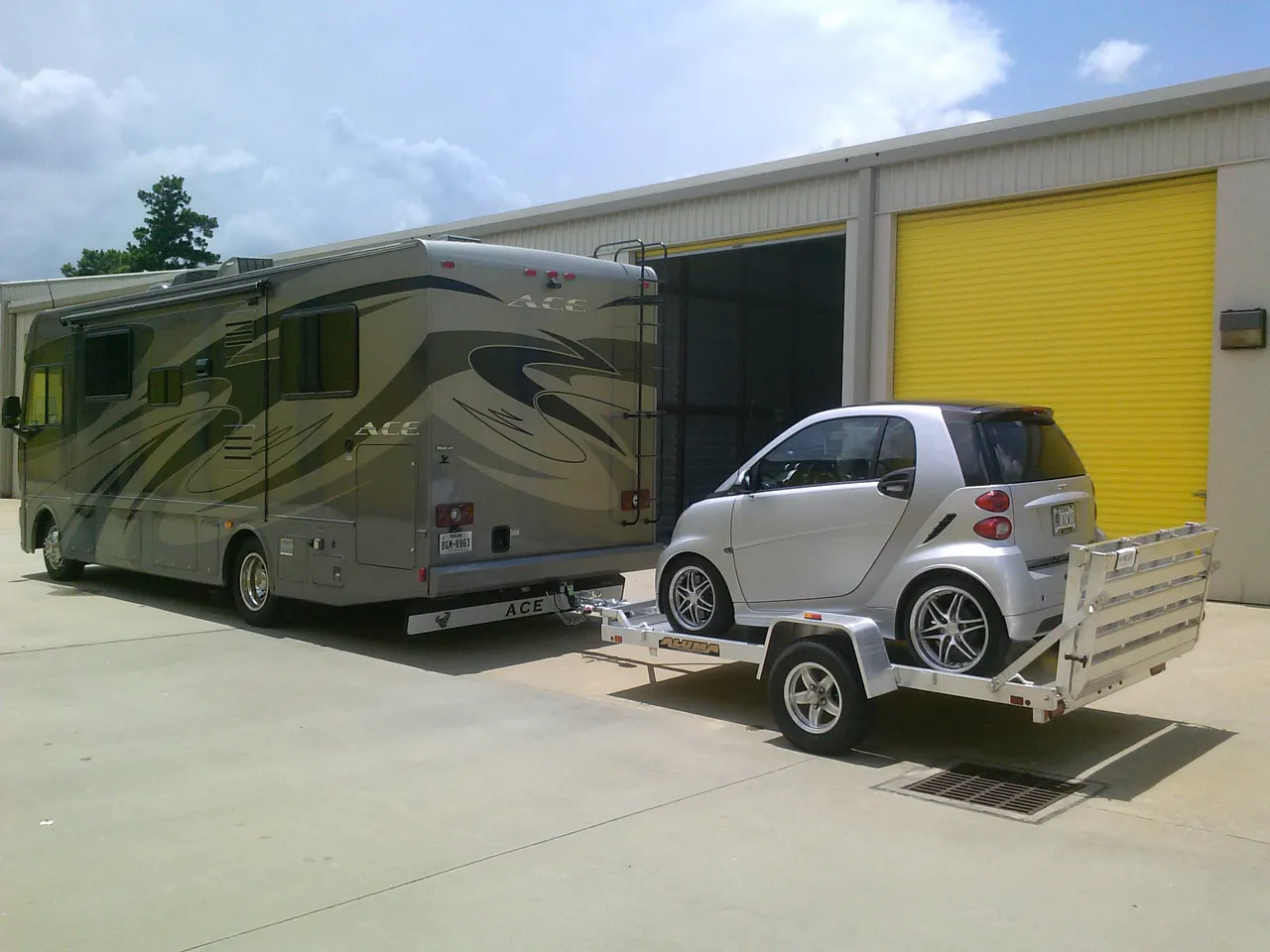
Image created in Canva by @justclickindiva utilizing its free images and bckgrnds

Day 2 of the 30-day Blogging Challenge (Part 2).
Best investment you made

From the year 2002 up to and including 2008, the retail price of gasoline in the U.S. rose steadily. Not knowing whether they would continue to rise, we began looking at ways to reduce or eliminate any household expenses subject to inflation.
Knowing that we would continue working in our careers for at least ten more year, we decided to downsize our vehicles to more efficient fuel models. Our monthly fuel costs totaled over $200.
It was at this point in time that car manufacturers were introducing more fuel efficient vehicles. We decided to purchase a Smart Car. This vehicle was manufactured by a subsidiary of Mercedes-Benz and its parent company, Daimler.
Two companies, Swatch and Mercedes Benz entered into an agreement to make the Smart Cars. Swatch's founder, Nicholas Hayek, envisioned a small and highly efficiently car that was also affordable. He was a pioneer at the time with idea of a small car that only held two people with little room for anything else, such as cargo space.

Image by By Song.li from Wikimedia.org
So in 2008, we decided to purchase a Smart Car. The car wasn't sold in the U.S., so we had to order it. Six months later, our Mercedes-Benz dealership called for us to pick it up.
The reason we purchased the Smart Cars was that we both drove a combined 120 miles round trip each day for our jobs. Half the time was spent idling in traffic on freeways. It was brutal in terms of wasted time and fuel costs.
Also, the car fit our needs at the time. The price was extremely affordable. Refueling one or twice a month was ideal in terms of our fuel budget. Also, the cargo space was surprisingly large enough to carry our loads. And the ease of parking was incredible. So we traded in our full-size SUVs.
A month after our purchase, we were so enamored with it that we ordered our second one. Our fuel expense for that first month was $40 total for operating both cars daily. It was an amazing savings of over $150 month. We decided to place our savings each month in a savings account so that we could calculate at the end of the year how much we saved on fuel.
The Smart Car is not for everyone. It's a 2-passenger, rear-engine, rear-wheel drive micro vehicle. It's only 8.8 ft. in total length.1
We received our share of laughs and ridicule. However, we were happy with our decision. I remember our neighbors laughing whenever we would have the garage door open and they'd pass by our home. They laughed because they'd never seen three cars in a 2-car garage before.
How was that possible? We parked them behind each other, with our full-size vehicle next to them.
The Smart Car never fully gained a foothold in the U.S. Today, manufacturing of the model has discontinued. I'm happy that we were able to utilize it at the time it was introduced. I still feel that it was the best investment I made at the time.
In fact, once I retired from my career several years later, we downsized again and sold one of the Smart Cars.
However, we still are enjoying the Brabus model of the Smart Car everyday. Sometimes we take it with us in its specialty trailer when enjoying our RV. We even travel just the two of us in it on trips out of town. Other drivers are barely able to keep their eyes on the road.

We just laugh and continue on saving on fuel costs.

Desde el año 2002 hasta el 2008 inclusive, el precio de venta al público de la gasolina en EE.UU. aumentó constantemente. Al no saber si seguirían subiendo, empezamos a buscar formas de reducir o eliminar los gastos domésticos sujetos a la inflación.
Sabiendo que seguiríamos trabajando en nuestras carreras durante al menos diez años más, decidimos reducir el tamaño de nuestros vehículos a modelos de combustible más eficientes. Nuestros gastos mensuales de combustible ascendían a más de 200 dólares.
Fue en ese momento cuando los fabricantes de automóviles estaban introduciendo vehículos más eficientes en cuanto a combustible. Decidimos comprar un Smart Car. Este vehículo era fabricado por una filial de Mercedes-Benz y su empresa matriz, Daimler.
Dos empresas, Swatch y Mercedes Benz, llegaron a un acuerdo para fabricar los Smart Cars. El fundador de Swatch, Nicholas Hayek, imaginó un coche pequeño y muy eficiente que además fuera asequible. Fue pionero en su momento con la idea de un coche pequeño en el que sólo cupieran dos personas y con poco espacio para todo lo demás, como el de carga.
Así que en 2008, decidimos comprar un Smart Car. El coche no se vendía en Estados Unidos, así que tuvimos que encargarlo. Seis meses después, nuestro concesionario Mercedes-Benz nos llamó para que lo recogiéramos.
La razón por la que compramos el Smart Car fue que ambos recorríamos un total de 120 millas de ida y vuelta cada día por nuestros trabajos. La mitad del tiempo lo pasábamos parados en el tráfico de las autopistas. Era brutal en términos de pérdida de tiempo y costes de combustible.
Además, el coche se ajustaba a nuestras necesidades en ese momento. El precio era muy asequible. Repostar una o dos veces al mes era ideal para nuestro presupuesto de combustible. Además, el espacio de carga era sorprendentemente grande para llevar nuestras cargas. Y la facilidad de aparcamiento era increíble. Así que cambiamos nuestros SUV de tamaño completo.
Un mes después de nuestra compra, estábamos tan enamorados de él que pedimos el segundo. Nuestro gasto en combustible para ese primer mes fue de 40 dólares en total por operar ambos coches diariamente. Fue un ahorro increíble de más de 150 dólares al mes. Decidimos depositar nuestros ahorros cada mes en una cuenta de ahorro para poder calcular al final del año cuánto habíamos ahorrado en combustible.
El Smart Car no es para todo el mundo. Es un microvehículo para 2 pasajeros, con motor trasero y tracción trasera. Sólo mide 2,5 metros de longitud total.
Recibimos nuestra cuota de risas y burlas. Sin embargo, estábamos contentos con nuestra decisión. Recuerdo que nuestros vecinos se reían cada vez que teníamos la puerta del garaje abierta y pasaban por delante de nuestra casa. Se reían porque nunca habían visto tres coches en un garaje de dos plazas.
¿Cómo era posible? Los aparcamos uno detrás del otro, con nuestro vehículo de tamaño normal al lado.
El Smart Car nunca llegó a imponerse del todo en EE.UU. Hoy en día se ha dejado de fabricar este modelo. Me alegro de haber podido utilizarlo en el momento en que se introdujo. Sigo pensando que fue la mejor inversión que hice en su momento.
De hecho, una vez que me jubilé de mi carrera varios años después, volvimos a reducir el tamaño y vendimos uno de los Smart Cars.
Sin embargo, seguimos disfrutando del modelo Brabus del Smart Car cada día. A veces lo llevamos con nosotros en su remolque especial cuando disfrutamos de nuestra autocaravana. Incluso viajamos los dos solos en él en viajes fuera de la ciudad. Otros conductores apenas son capaces de mantener la vista en la carretera.
Nos reímos y seguimos ahorrando en gastos de combustible.


Follow my 30-Day Blogging Challenge below:
| Day 1 |

@flaxz initiative #iamalivechalleng (Published my Day 2 of 30-Day Blogging Challenge [Part 2] post today)

Thanks,
@justclickindiva
Happy rest of the week everyone with whatever your endeavors.


SOURCES:
a) JustClickindiva's Footer created in Canva utilizing its free background and images used with permission from discord admins.
b) Unless otherwise noted, all photos taken by me with my (i) Samsung Galaxy 10" Tablet, (ii) Samsung Phone, & (iii) FUJI FinePix S3380 - 14 Mega Pixels Digital Camera
c) Purple Butterfly part of purchased set of Spiritual Clip Art for my Personal Use
d) All Community logos, banners, page dividers used with permission of Discord Channel admins.
e) Ladies of Hive banner used with permission of and in accordance with the admin's guidelines.
1 Smart Car. Wikipedia.org. https://en.wikipedia.org/wiki/Smart_Fortwo


